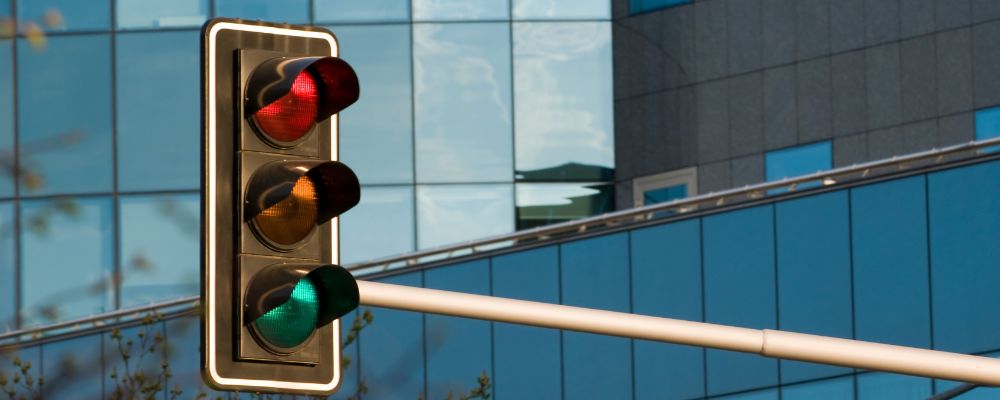In the complex landscape of occupational safety, the deployment of high-visibility (hi-vis) clothing emerges as a vital safeguard against the myriad hazards encountered in high-risk settings. This article delves into the Physics and Psychology of hi-vis workwear colors, and selecting suitable hi-vis garments, focusing on how these choices significantly influence worker safety and visibility.
The Scientific Framework and Standards of Hi-Vis Colors
At the core of high-visibility color selection lies the ANSI/ISEA 107 standards, which provide a rigorous framework for the choice of high-visibility apparel. These standards underscore the necessity of opting for garments that meet specific reflective qualities and adhere to approved color schemes to enhance worker safety across various environments.
Safety Yellow (Neon Yellow)
Renowned for its striking visibility, safety yellow offers unparalleled contrast against numerous backgrounds. Its effectiveness in low-light conditions makes it a staple across multiple sectors, especially for tasks conducted alongside roads.
Safety Orange
Esteemed for its capacity to offer contrast and visibility, safety orange proves invaluable in environments laden with potential hazards. Its application is particularly noted in construction and roadwork settings, where visibility is paramount.
Safety Red
Though less prevalent than fluorescent yellow or orange, bright red serves a unique purpose in scenarios demanding high visibility for workers, such as in firefighting and emergency services.

The Interplay of Psychology and Physics in Color Selection
The efficacy of safety wear significantly hinges on the interrelated aspects of psychology and physics, especially in the realm of color selection. This section explores how the psychological impact and physical properties of colors contribute to creating safety wear that effectively stands out, ensuring worker protection.
Psychological Underpinnings of Safety Colors
The psychological resonance of safety colors taps into our primal responses to color. Yellow, associated with warmth and alertness, is notably the most visible color to the human eye. Its widespread use in safety applications stems from its ability to attract attention and signal caution. Similarly, green and red have been historically utilized to denote safety instructions and hazards, guiding behavior and response in safety-critical situations.
The Physics of Color Perception
From a physical standpoint, color perception begins with light interacting with the photoreceptors in our eyes. The human ability to perceive a broad spectrum of colors aids in distinguishing the chosen safety wear colors under varied lighting conditions. This physiological mechanism ensures the effectiveness of safety wear colors across diverse environments and amongst individuals with differing color perception capabilities.

Selecting the Optimal Color for Specific Work Environments
The process of choosing the most suitable high-visibility color necessitates a thorough understanding of the specific work environment and job nature. The ANSI/ISEA 107 standards serve as a cornerstone for this decision-making process, emphasizing the selection of garments that meet the required visibility and safety standards.
Manufacturing and Construction Sites: Fluorescent yellow-green is favored for its visibility in urban and industrial settings, though it may be less effective in green-rich environments.
Railroads and Trucking: The contrast provided by fluorescent yellow-green is beneficial against dark-colored objects, making it a preferred choice in these sectors.
Road Construction: Fluorescent yellow-green is particularly advantageous in construction zones, ensuring workers are distinctly visible.
Snow and Ice, Night Work: Fluorescent red emerges as a superior choice for visibility in snowy conditions or during night operations, widely recognized in European safety protocols.
Compliance with Safety Standards
Adherence to compliance standards set by authoritative bodies like ANSI and OSHA is imperative for ensuring the use of high-visibility apparel that meets established visibility and safety criteria. These standards guide the application of safety colors across various industries, highlighting the importance of selecting the appropriate high-visibility color tailored to the work environment and job specifics.

Conclusion
The selection of the right high-visibility clothing is not merely a preference but a pivotal safety measure that significantly affects worker safety and visibility. By meticulously evaluating the work environment, lighting conditions, and adhering to specific industry standards, employers and safety managers can make informed decisions that enhance safety and compliance. Thus, ensuring every worker's visibility and protection in potentially hazardous environments.
FAQs
How do I select the right high-visibility color for my workplace?
The choice of high-visibility color should be tailored to your work environment and job nature. Safety yellow is versatile for various backgrounds and suitable for many industries. Safety orange is ideal for hazard-prone areas, offering excellent contrast. Safety red is best for roles needing strong visibility, like emergency services. Assess your work setting's background colors and lighting conditions to decide.
Are any high-visibility colors non-compliant with ANSI-ISEA or OSHA standards?
Such as safety pink, while increasingly popular for non-workplace use, does not meet OSHA-approved high-visibility colors or comply with ANSI-ISEA standards for occupational safety apparel.
Beyond color, what should I consider when choosing high-visibility clothing?
Beyond color, consider the work nature, environment, and industry standards. ANSI/ISEA standards define performance classes and garment types based on the work environment. Also, consider weather and lighting conditions to ensure the apparel provides maximum visibility and safety.




